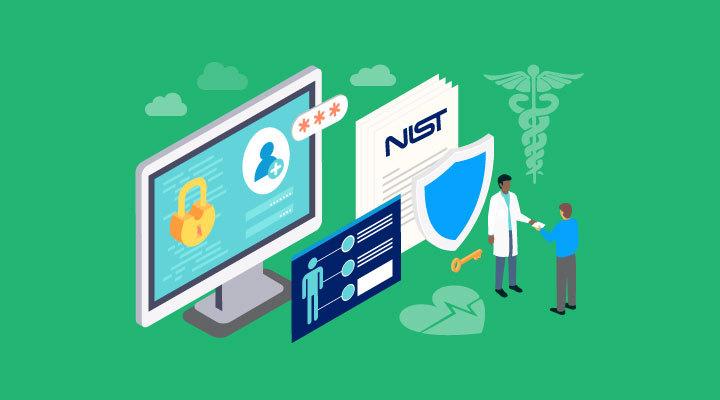Introduction to Cybersecurity in the Transportation Sector

In today’s rapidly evolving digital landscape, cybersecurity has emerged as a critical concern for small businesses within the transportation sector. The increasing reliance on digital systems and technologies—such as GPS, electronic logging devices (ELDs), and telematics—has revolutionized the industry, offering significant operational efficiencies and enhanced service capabilities. However, this technological advancement also brings with it a myriad of cybersecurity challenges that must be addressed to safeguard business operations.
Transportation companies are uniquely vulnerable to a range of cyber threats. The integration of digital tools and connected devices increases the attack surface, making it easier for cybercriminals to exploit system weaknesses. Common threats include data breaches, where sensitive information is accessed and potentially leaked or sold; ransomware attacks, which can lock down critical systems until a ransom is paid; and cyber-attacks on vehicle control systems, potentially leading to catastrophic operational failures.
The consequences of cybersecurity incidents in the transportation sector are far-reaching. Financial losses can be substantial, stemming not only from the immediate disruption of business operations but also from the costs associated with remediation and recovery. Operational disruptions can cause significant delays, impacting customer satisfaction and leading to potential loss of business. In addition, the damage to a company’s reputation can be long-lasting, eroding trust and confidence among clients and partners.
Given these risks, it is imperative for small businesses in transportation to prioritize cybersecurity measures. Implementing robust security protocols, staying informed about emerging threats, and investing in employee training are essential steps towards mitigating these risks. By taking proactive measures, transportation companies can safeguard their digital assets, ensure operational continuity, and maintain their competitive edge in an increasingly digital world.
Common Cybersecurity Threats in Transportation
The transportation sector, particularly small businesses within it, faces a multitude of cybersecurity threats. These threats can have devastating effects, compromising both operational integrity and customer trust. Among the most prevalent threats are phishing, malware, ransomware, and man-in-the-middle (MitM) attacks.
Phishing attacks often target employees through deceptive emails that appear legitimate. For instance, a transportation company might receive a seemingly official message requesting login credentials or prompting the download of a malicious attachment. Once the malware is installed, it can grant cybercriminals access to sensitive data or control over crucial systems. One notable case involved a small logistics firm whose operations were halted for days following a successful phishing attack, resulting in significant financial losses and reputational damage.
Malware, a broad category encompassing viruses, worms, and Trojans, introduces another layer of risk. Malware can infiltrate transportation systems through various vectors, such as infected USB drives or compromised websites. The impact is far-reaching; an infected system can lead to data breaches, operational downtime, and even physical safety risks. For example, a trucking company once experienced a malware attack that disrupted its GPS tracking system, causing delays and logistical nightmares.
Ransomware is particularly insidious, encrypting a company’s data and demanding payment for its release. In the transportation sector, the consequences can be dire. A small shipping firm might find its entire shipment database encrypted, crippling its ability to track deliveries or manage schedules. Real-world incidents have shown that some businesses, under pressure, end up paying the ransom, only to find that their data remains inaccessible or compromised.
Man-in-the-middle (MitM) attacks exploit insecure network connections. Cybercriminals intercept communications between two parties, often to steal information or inject malicious content. In the context of transportation, an attacker could intercept data between a dispatch center and a vehicle, potentially leading to unauthorized route changes or data theft. A notable example involved a public transit system where attackers manipulated communication channels, causing system-wide confusion and delays.
The vulnerabilities within transportation systems are often due to outdated software, insecure network connections, and insufficient employee training. Many small businesses in the transportation sector rely on legacy systems that lack robust security features. Additionally, inadequate training makes employees susceptible to social engineering attacks, further compounding the risk. Addressing these vulnerabilities is crucial for enhancing cybersecurity posture and ensuring the safe and efficient operation of transportation services.
Best Practices for Enhancing Cybersecurity
In the transportation sector, enhancing cybersecurity is critical for safeguarding sensitive data and ensuring operational continuity. To fortify your defenses, consider implementing robust firewalls that act as a barrier against unauthorized access. Firewalls are essential in filtering out malicious traffic and protecting your network from external threats.
Regular software updates are another key component of a strong cybersecurity strategy. Software vendors frequently release patches to address security vulnerabilities. Keeping your systems updated ensures that known security flaws are promptly rectified, reducing the risk of exploitation by cybercriminals.
Secure password policies are fundamental to preventing unauthorized access. Encourage employees to create complex passwords that combine letters, numbers, and special characters. Implement multi-factor authentication (MFA) to add an extra layer of security. MFA requires users to provide two or more verification factors, making it significantly more difficult for attackers to gain access.
Employee training and awareness programs are vital in combating social engineering attacks. Educate your staff about common phishing tactics and how to recognize suspicious emails or links. Regular training sessions can help employees stay vigilant and reduce the likelihood of falling victim to social engineering schemes.
Conducting regular security assessments and audits is crucial for identifying and addressing potential vulnerabilities. These assessments can uncover weaknesses in your cybersecurity posture, allowing you to take proactive measures to mitigate risks. Consider hiring external experts to perform comprehensive audits and provide objective insights.
Cybersecurity insurance can provide a financial safety net in the event of a cyber incident. This type of insurance covers costs associated with data breaches, ransomware attacks, and other cyber threats. It can be an invaluable resource for small businesses, helping them recover more swiftly from cybersecurity incidents.
An incident response plan is essential for effectively managing and mitigating the impact of cyberattacks. Develop a clear, actionable plan that outlines the steps to take in the event of a security breach. Ensure that all employees are familiar with the plan and conduct regular drills to test its effectiveness. A well-prepared response can significantly minimize the damage and speed up the recovery process.
Leveraging Technology and Partnerships for Better Security
In the ever-evolving landscape of cybersecurity, small transportation businesses must harness the power of advanced technology and strategic partnerships to fortify their defenses. Implementing sophisticated cybersecurity tools is paramount to safeguarding sensitive data and operational systems. Key technologies such as intrusion detection systems (IDS) play a crucial role in monitoring network traffic for suspicious activities, enabling businesses to detect and respond to potential threats in real-time. Additionally, encryption is essential for protecting data both in transit and at rest, ensuring that unauthorized parties cannot access critical information.
Multi-factor authentication (MFA) is another vital component of a robust cybersecurity strategy. By requiring multiple forms of verification before granting access to systems or data, MFA significantly reduces the risk of unauthorized access. Small transportation businesses should integrate these technologies into their cybersecurity frameworks to enhance their overall security posture.
Collaborating with cybersecurity experts and service providers is equally important. These partnerships provide small businesses with access to specialized knowledge and resources that may not be available in-house. Cybersecurity professionals can offer tailored solutions, conduct thorough risk assessments, and provide ongoing support to address emerging threats. Leveraging the expertise of these professionals can ensure that small transportation businesses remain resilient against cyber-attacks.
Staying informed about the latest cybersecurity trends and threats is critical for maintaining a proactive approach to security. Industry associations and government resources offer valuable insights and updates that can help businesses stay ahead of potential risks. Engaging with these organizations can provide access to best practices, training opportunities, and threat intelligence that are essential for maintaining robust cybersecurity defenses.
Public-private partnerships play a pivotal role in enhancing the cybersecurity ecosystem within the transportation sector. By working together, government agencies and private entities can share information, resources, and strategies to address common challenges. These collaborations can lead to the development of more effective security measures and a more resilient transportation infrastructure.

